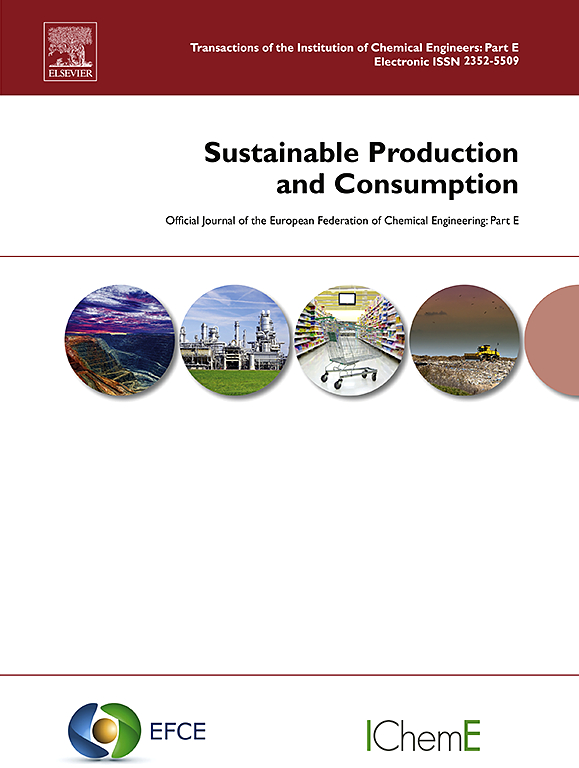Assessing environmental impacts of various biofertilizers in Europe: A step toward circular economy transition
IF 9.6
1区 环境科学与生态学
Q1 ENVIRONMENTAL STUDIES
引用次数: 0
Abstract
Composts, biofertilizers, and biostimulants are emerging as key solutions for sustainable agriculture, contributing to nutrient cycles closure and resource efficiency. This study evaluated the environmental impacts of three composts, three biofertilizers, and two biostimulants produced in Ukraine, Denmark, and Sweden using a life cycle assessment approach. The analyzed products include low and high biology compost, vermicompost, insect frass, digestate, biochar, fish hydrolysate, and compost tea. Environmental impacts were assessed from production to farm gate delivery, using functional units based on nitrogen, phosphorus, and potassium contents. To date, no comparative studies have evaluated biofertilizers, biostimulants, and composts based on their nutrient content, highlighting the novelty and innovative nature of this research.
The results revealed that digestate is the most environmentally favourable option for mitigating climate change impacts per tonne of nitrogen and potassium, while vermicompost is optimal for phosphorus due to its high intrinsic content. Fish hydrolysate has the highest impact on acidification, with potassium being the nutrient contributing more to this impact. Compost tea is the most water-consuming biostimulant, and it has the highest impact on eutrophication and land use per tonne of nitrogen, compared to the other products. Interestingly, biochar emerged as the least impactful in terms of acidification, eutrophication, land use, and water use across all three nutrients. Low biology compost, high biology compost, and insect frass are environmentally friendly options, demonstrating low impact across all categories. The sensitivity analysis results highlight the impact of nitrogen and phosphorus mineral fertilizer equivalents on environmental outcomes. Significant changes were observed in land use, freshwater eutrophication, and acidification, while climate change and water-use impacts remained stable.
Selecting the appropriate composts, biofertilizers, and biostimulants can enhance circularity and minimize environmental impacts. This study provides valuable insights to help decision-makers advance sustainable agricultural practices.

评估欧洲各种生物肥料对环境的影响:迈向循环经济转型的一步
堆肥、生物肥料和生物刺激剂正在成为可持续农业的关键解决方案,有助于养分循环的闭合和资源效率。本研究使用生命周期评估方法评估了乌克兰、丹麦和瑞典生产的三种堆肥、三种生物肥料和两种生物刺激素对环境的影响。分析的产品包括低生物堆肥和高生物堆肥、蠕虫堆肥、昆虫残渣、消化物、生物炭、鱼水解物和堆肥茶。利用基于氮、磷、钾含量的功能单元,评估了从生产到农场大门交付的环境影响。迄今为止,还没有基于营养成分对生物肥料、生物刺激素和堆肥进行比较研究,这突出了本研究的新颖性和创新性。结果表明,消化是减轻每吨氮和钾对气候变化影响的最有利的环境选择,而蚯蚓堆肥由于其高内在含量而是磷的最佳选择。鱼类水解液对酸化的影响最大,钾是对这种影响贡献最大的营养物质。堆肥茶是最耗水的生物刺激物,与其他产品相比,它对每吨氮的富营养化和土地利用的影响最大。有趣的是,生物炭在酸化、富营养化、土地利用和所有三种营养物质的用水方面的影响最小。低生物堆肥,高生物堆肥和昆虫草是环境友好的选择,在所有类别中都显示出低影响。敏感性分析结果突出了氮磷矿肥当量对环境结果的影响。土地利用、淡水富营养化和酸化发生显著变化,气候变化和用水影响保持稳定。选择合适的堆肥、生物肥料和生物刺激剂可以提高循环性,最大限度地减少对环境的影响。这项研究为帮助决策者推进可持续农业实践提供了有价值的见解。
本文章由计算机程序翻译,如有差异,请以英文原文为准。
求助全文
约1分钟内获得全文
求助全文
来源期刊

Sustainable Production and Consumption
Environmental Science-Environmental Engineering
CiteScore
17.40
自引率
7.40%
发文量
389
审稿时长
13 days
期刊介绍:
Sustainable production and consumption refers to the production and utilization of goods and services in a way that benefits society, is economically viable, and has minimal environmental impact throughout its entire lifespan. Our journal is dedicated to publishing top-notch interdisciplinary research and practical studies in this emerging field. We take a distinctive approach by examining the interplay between technology, consumption patterns, and policy to identify sustainable solutions for both production and consumption systems.
 求助内容:
求助内容: 应助结果提醒方式:
应助结果提醒方式:


